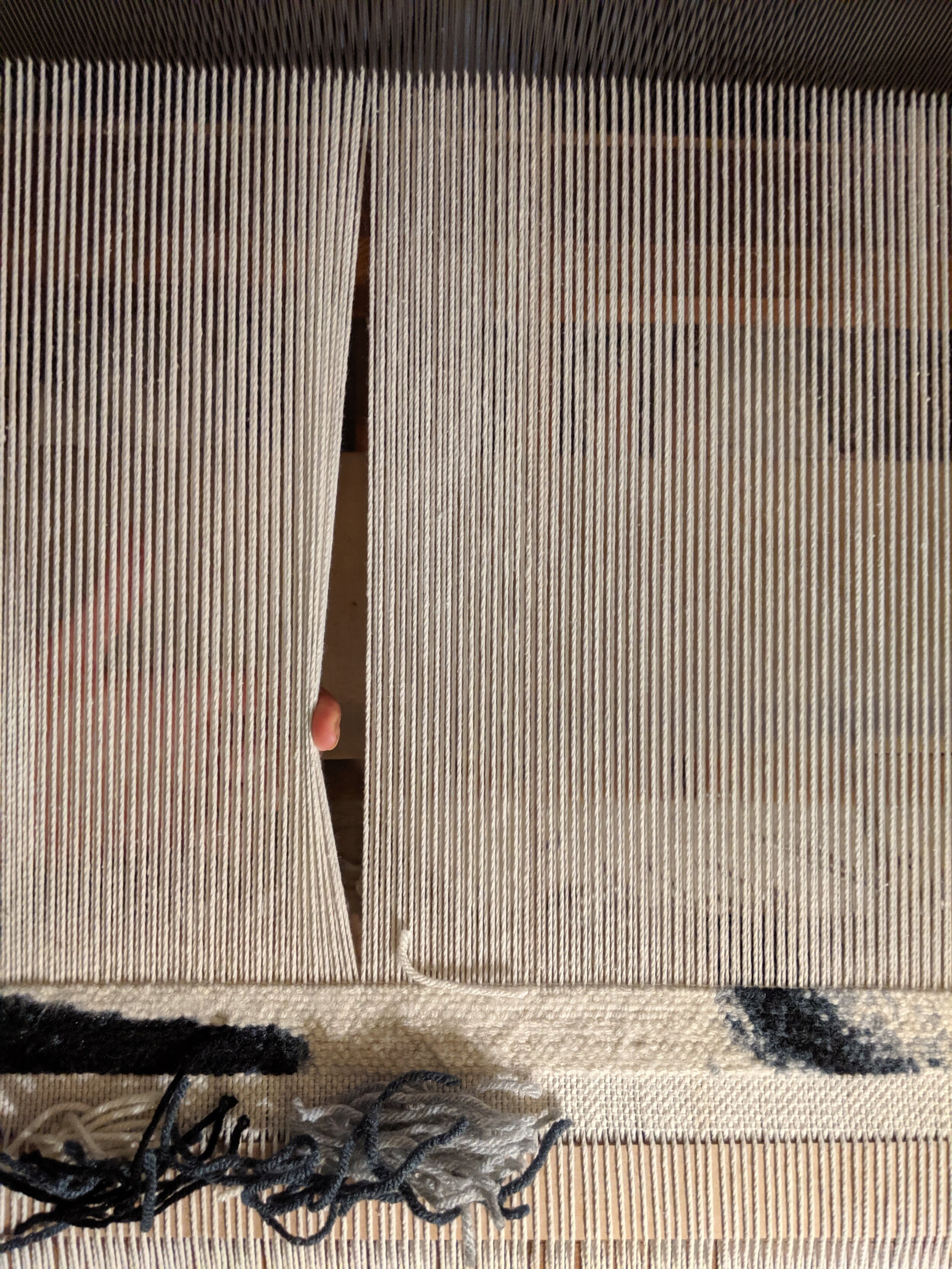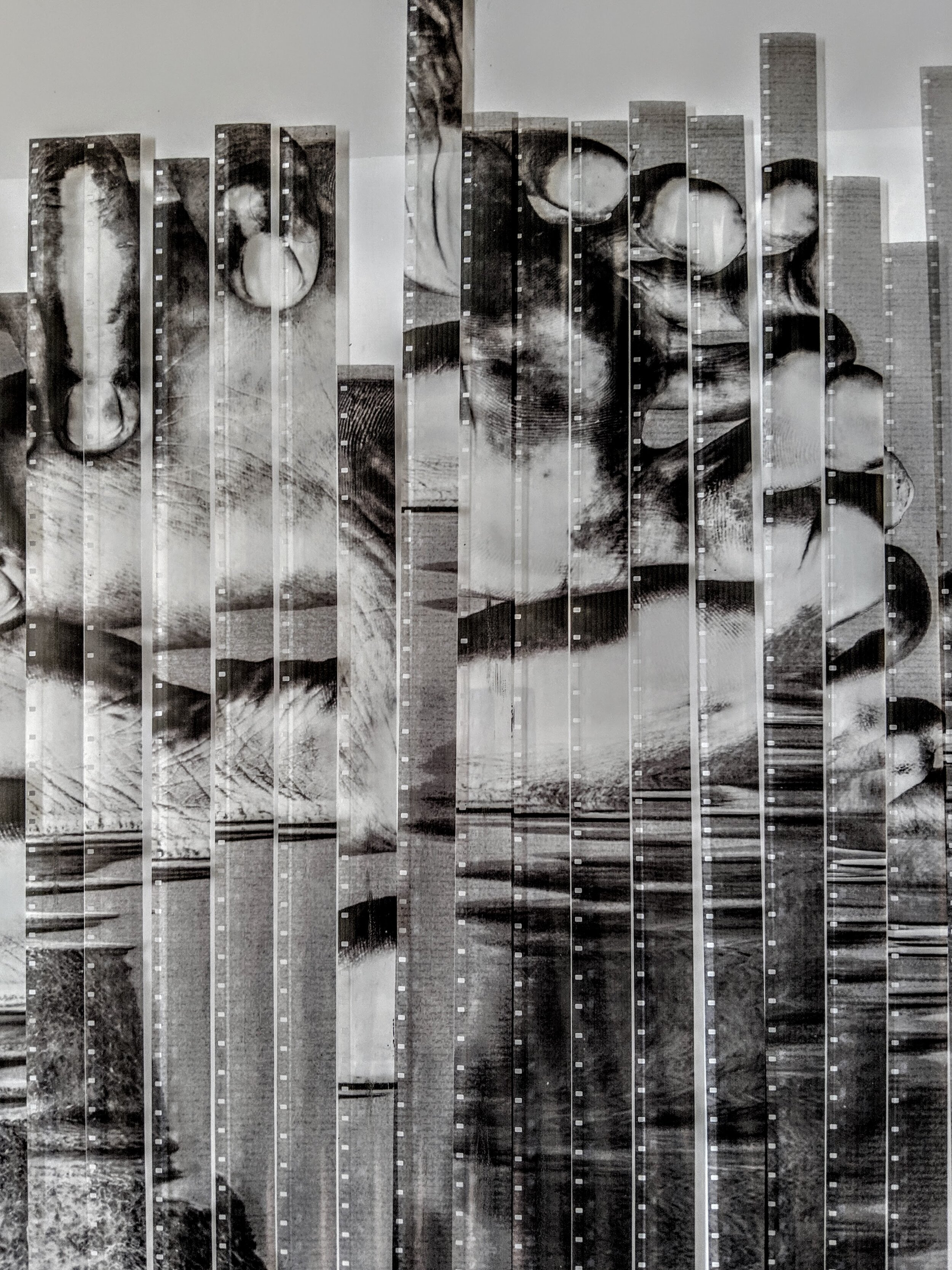








Alterations of a Body (2019-ongoing)
Performance with Loom, Yarn, Plexiglass, 16mm acetate, Ink
Loom
In the last ten years, Nazlı Dinçel has generated a body of short films that channel personal, physical experiences onto the surface of celluloid. Through the application of text, layered imagery, and texture to analogue film, Dinçel forges a space to study such aspects of interiority as desire, failed communication during the search for intimacy or love, self-pleasure, and adolescent sexual awakening.
By way of her handmade filmmaking, Dinçel extracts narratives, even those of an intensely personal nature, from herself. The artist has described art-making as a process of contemplation and even healing, to the extent that "the content is exhausted in the making of the films." She is omnipresent in her films—her body as subject, her voice as narration, her writing scratched on the frame, the trace of her sewing, hammering, and letter-punching (and further: the self-distribution of her films, the inclination to project her own work). Yet, Dinçel's oeuvre resists tropes of diaristic cinema. Her Silent Seaming (2014) and Solitary Acts #4-6 (2015), perhaps her most intimate films, especially affirm themselves as autonomous entities, certainly not awaiting the viewer's arousal or shared confessional frisson to complete them. Rather, the work resonates with themes inextricable from its subversively frank sexuality; Dincel iterates the dislocated body onto vaster planes of migration and otherness, labor, and reactionary threats to female existence.
With Alterations of a Body, Dinçel introduces an inspired new register for her deep thinking on identity as she shifts from recording her body to enacting it in the Haggerty Museum of Art. The performance articulates a new type of cinematic temporality: transposed into the exhibition is a loop between the body's image, its presence, and its output, all foregrounded by the oscillation between two and three dimensions. From the protocol to weave rugs based on adjacent filmic imprints of her figure, Dinçel's project proposes expansive avenues to think about the measure of production through time. While the work recalls London Film-makers' Co-op artist Annabel Nicolson's film performance with sewing machines or structuralist film strip assemblages, a more ancient citation is equally evoked. Above all, Homer's Penelope—Dincel will be weaving from a garment draped on her back, embedding nakedness and an unraveling of sorts into the act of creation. Visibility, vulnerability, and affirmation all promise to inhabit Dincel's time at the Haggerty in ways that remain to be discovered.
It is critical to note that Dinçel's rug-making is not a durational performance or living sculpture, but rather a task independent of the audience. Activity will cease when the weaving is complete. After that, the objects will remain in the gallery to attest to their own production while standing in for the vacated body. Rug-making has long figured in Dincel's practice in a gesture to her native Turkey and the gendered labor of craft. More specifically, a relation is drawn between traditional Turkish weaving, customarily assigned to young women with fine fingers, and the tedious, painstaking processes with which Dincel manipulates film—a parallel now made manifest in the two months the artist will sit at the loom. Her rigorous attention to texture opens up other resonances between media and fiber, reflecting on how digital pixels, film grain, and woven thread each construct an image, bringing to mind, among others, Beryl Korot's pioneering computing experiments in the 1970s.
Dinçel's clarity of vision in her artistic practice is joined by a deft sense of rhythm; images and words alike register as poetry. A final observation might pause on the word "loom,' quasi-symmetrical and smooth on the tongue. It is suggestive of the work Dincel has plotted out for herself, and for us , at the Haggerty, together with perfect allusions to both anticipation and ephemerality.
Sophie Cavoulacos is Assistant Curator in the Department of Film at The Museum of Modern Art
Article published for the Haggerty Museum of Art and the Mary L. Nohl Fund Fellowships for individual artists May 2019

